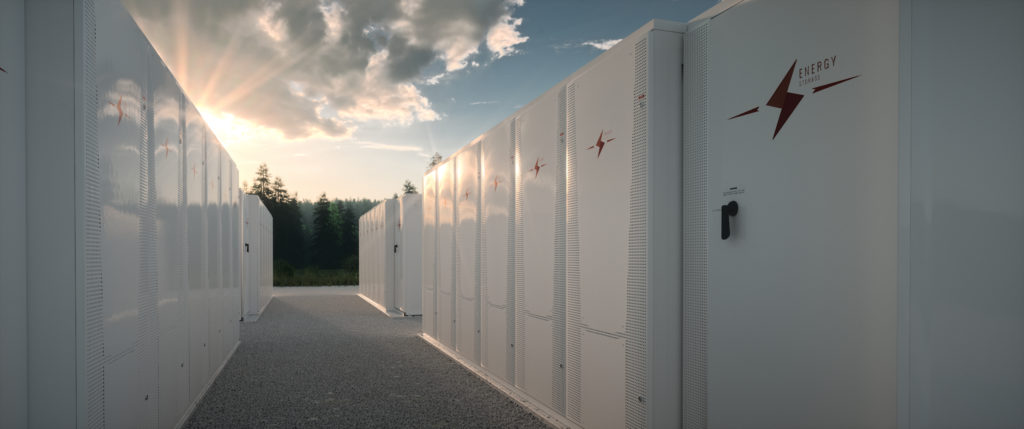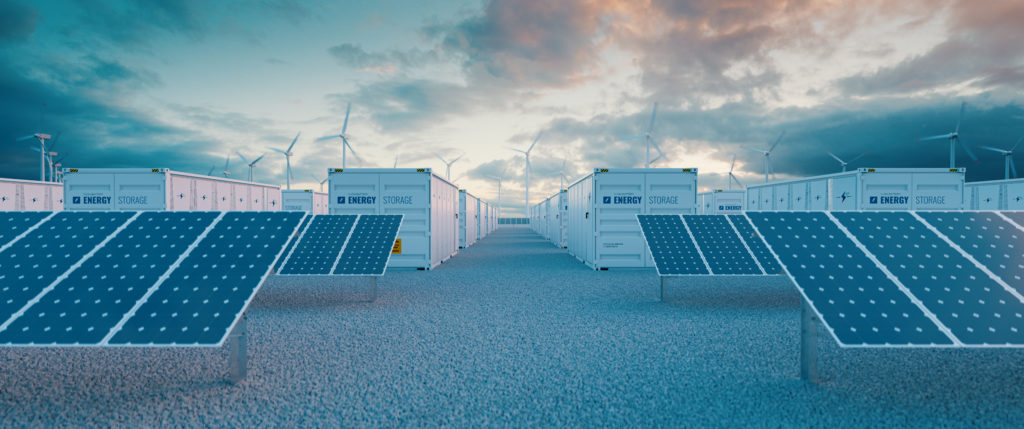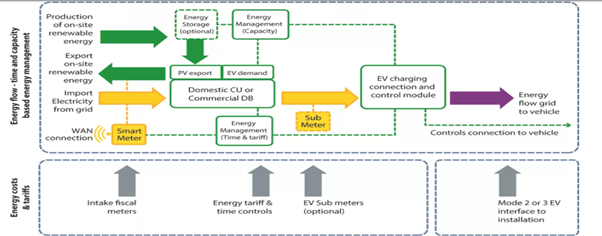Battery Energy Storage Systems (BESS) - the catalyst to unlock renewables?
Global battery storage capacity additions in 2020 rose to a record high of 5GW. Both China and the United States registered gigawatt scale additions. Utility-scale installations continue to dominate the market, accounting for around two-thirds of total added capacity. Although new policies and projects in key markets are set to accelerate growth, an even faster rise is needed to align with Net Zero Emissions by 2050 scenario, which anticipates nearly 600 GW of battery storage capacity by 2030[1].
In the UK, the Electricity System Operator (ESO), operational arm of National Grid has outlined four different pathways for the future of energy in the country in its Future Energy Scenarios (FES) [download (nationalgrideso.com)] [2]. This sets out the transformation scenarios to a decarbonised electricity system by 2035. Among the key messages to emerge from the report was that holistic energy market reform will be needed to drive flexibility with as much as 13GW of electricity storage needed by 2030 to enable the projected growth in renewables.
New Technologies = New Risk
Battery Energy Storage Systems (BESS), like most emerging technologies, brings new challenges to the market and introduces new risk exposure for stakeholders. Fire is one of the key risks, particularly with Lithium-Ion (Li-Ion) batteries. Li-Ion thermal runaway is a complex combination of chemical reactions and/or short circuits inside the cell that are initiated by excessive heat from inside or outside the cell. It is not a classic electrical fire. The chemical reactions generate additional heat which causes a positive feedback cycle to intensify the heat until there are no reactive agents left within the cell. Manufacturers are continuously developing modifications to Li-Ion cell chemistries to reduce the incidence and intensity of thermal runaway. Arguably, the most important aspect of the safe Li-Ion BESS design is the Battery Management System (BMS). Advanced BMS can address cell voltage safety, cell current safety, cell temperature safety, cell balancing, pack charge control, cell internal short detection and module redundancy. It can “learn” from the behaviour of the cell over time and enhance its performance.
Mechanical and electrical breakdown, coupled with poor quality installation are further risks to BESS projects. Additionally, fire suppression methods need to be carefully considered and implemented.
“Safety requirements for secondary lithium cells and batteries for use in electrical energy storage systems” is a China harmonized GB standard to IEC 63056: 2020. Once approved, it will be issued as a mandatory national standard. This document specifies requirements and tests for the product safety of secondary lithium cells and batteries used in electrical energy storage systems with a maximum DC voltage of 1500 V (nominal). Systems within the scope of the document include Home (residential) Energy Storage Systems (HESS) and large energy storage systems for both on- and off-grid applications. Some of the tests in the standard include external short-circuit testing, impact testing, drop testing, thermal abuse testing, overcharge testing, and forced discharge testing.[3]
The United States NFPA 855 code is the most commonly accepted standard and aims to ensure that all installations are done in a way that takes fire and life safety into consideration and should be considered by underwriters in assesing the risk.
"...using vehicle batteries to provide balancing and flexibility services has never been more pertinent than it is today."

Electric Vehicle Charging (EVC) and Vehicle to Grid Charging (V2G) - BESS on Wheels
With the recent hike in energy prices, the prospect of using Electric Vehicle’s (EV) to power homes (and businesses) when the cost of electricity is high and the ability to charge the vehicle’s when the cost of electricity is low, is becoming more appealing. A recent Ofgem case study[4] estimated that by 2030, the UK could have almost 11 million EVs on the road. If 50% of these vehicles were V2G enabled, this would open up 22 TWh (Terrawatt Hours) of flexible EV discharging capacity per year and could provide approximately 16GW of daily flexible capacity to the grid – so BESS on wheels; why not?
Clearly using vehicle batteries to provide balancing and flexibile services has never been more pertinent than it is today. However, there are still a number of questions around the technology and its future, so it is important to strike the correct balance between large scale BESS and all this potential capacity on wheels that just needs to be plugged into bidirectional chargers. Ultimately what we need is a varied mix of clean energy sources, but there is no doubt that V2G offers significant potential as part of this mix, and it offers huge opportunities and benefits for both consumers and the energy mix.
Policymakers and regulators are working hard to keep pace with these development and the following paragraphs set out the progress in these areas.

Taking Charge: The Electric Vehicle Infrastructure Strategy
Vehicle as storage guidance
Smart integration guidance
Taking Charge: The Electric Vehicle Infrastructure Strategy,[5] was published by the UK Department for Transport in March 2022. Their strategy sets out a vision and action plan for the rollout of EV charging infrastructure in the UK, ahead of the phase out dates. They intend to end the sale of new petrol and diesel vehicles by 2030, and for all new cars and vans to be fully zero emission at the tailpipe by 2035.
The IET Code of Practice for Electric Vehicle Charging Equipment Installation, 4th Edition makes extensive improvements to the guidance to cover new protection and control technologies that have emerged since the publication of the previous edition, in addition to supporting the latest installation safety requirements in BS 7671:2018+A2:2022.
Section 10 of the IET Code of Practice discusses vehicle as storage. The guidance has been enhanced to discuss the relationship envisaged between a vehicle as storage and the grid. The guidance now includes special considerations for vehicle-to-grid services and considers the vehicle as storage system as part of an integrated system with other microgeneration or local generation schemes.
Another area of EV technology that is set to become key for future energy strategies, is integration with the smart grid. Building on the foundation guidance in the 3rd edition of the IET Code of Practice, Section 12 in the 4th edition now includes information flow diagrams of different smart control and integration use cases, with extended commentaries, covering:
- managed charging
- demand-limited (load curtailment) charging
- smart meter integration, and
- optimization for self-use of local renewable generation (Figure 5).


In Conclusion
Large scale BESS coupled with the mass adoption of EVs has the potential to unlock huge benefits. In order to strike the correct balance between innovation and regulation, it is important that we work on a global scale to pursue greater compatibility and remove uncertainties, inefficiencies and market barriers which can slow this innovation.
- Future energy systems will rely on a large array of services based on effective, economical electricity storage. This plethora of service needs, with varying performance requirements, suggests an important role for many different storage technologies.
- Electricity storage could makes possible a transport sector dominated by electric vehicles (EVs), enable effective, 24-hour off-grid solar home systems and supports renewable mini-grids.
- This key shift in system operation needs to be part of the energy planning process. The International Renewable Energy Agency (IRENA), analysing the effects of the energy transition until 2050 in a recent study for the G20, found that over 80% of the world’s electricity could derive from renewable sources by that date. Solar photovoltaic (PV) and wind power would at that point account for 52% of total electricity generation.
References
[1] IEA Tracking report November 2021, p. 3.
[2] https://www.nationalgrideso.com/future-energy/future-energy-scenarios/fes-2021
[3] https://www.exponent.com/knowledge/alerts/2022/01/china-adds-new-safety-requirements-for-bess/
[4]https://www.ofgem.gov.uk/publications/case-study-uk-electric-vehicle-grid-v2g-charging#:~:text=Consumer%20benefits&text=on%20the%20road.-,If%2050%25%20of%20these%20vehicles%20were%20V2G%20enabled%2C%20this%20would,flexible%20capacity%20to%20the%20grid.
[5] https://assets.publishing.service.gov.uk/government/uploads/system/uploads/attachment_data/file/1065576/taking-charge-the-electric-vehicle-infrastructure-strategy.pdf




